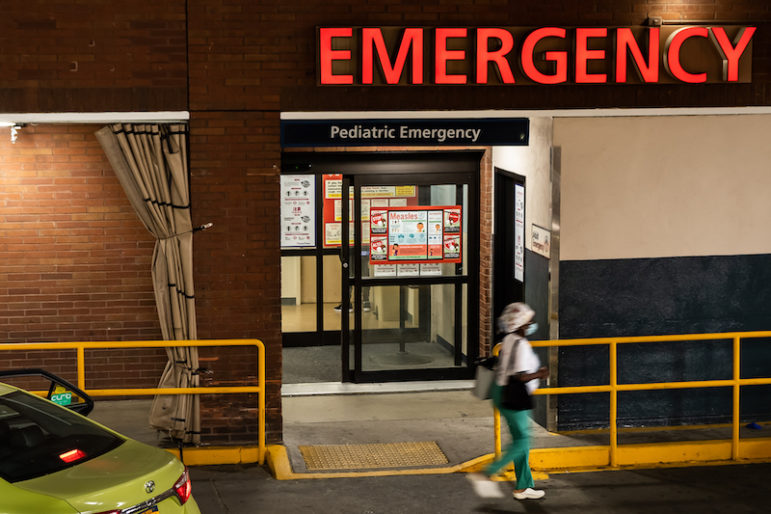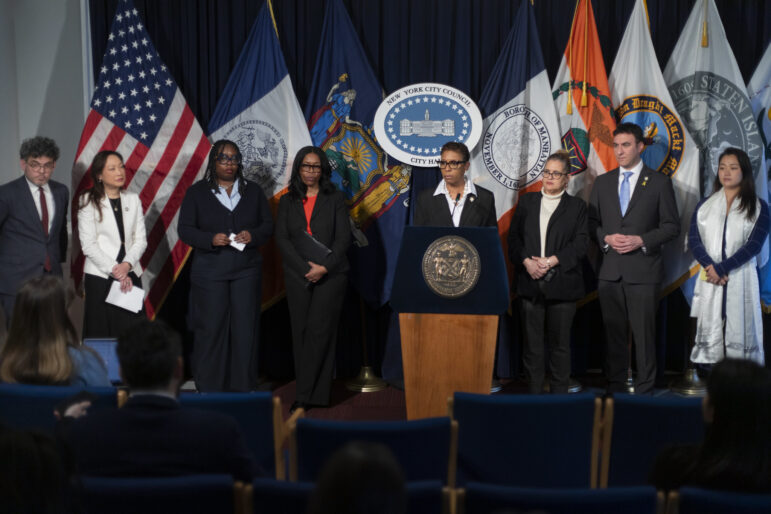Transportation groups and activists are discussing contingency plans in the face of a planned reduction in bus, subway and Access-A-Ride services that are scheduled to take effect by the end of June.
The Metropolitan Transportation Authority Board voted March 24 to cut 33 bus lines and two subway lines, revise service on 64 buses and transform Access-A-Ride – a door-to-door service for people with disabilities – into a shuttle to nearby buses and trains for some customers.
The cuts include:
• Elimination of overnight service on 15 bus lines.
• Twelve express bus lines will be eliminated and 11 will be restructured.
• Three Bronx bus routes will be eliminated and seven more will be modified or reduced.
• Seven Brooklyn bus lines will be eliminated and 15 will be restructured or reduced.
• Manhattan will lose four bus routes and have 17 restructured or reduced.
• Queens will lose four bus routes and have eight restructured or reduced.
• Staten Island will lose three bus routes and have six other lines changed.
• The W and V subway lines will be eliminated.
• The M and G trains will be reduced.
• In 12 percent of its trips, Access-A-Ride will run a reduced feeder service instead of full service.
• Seasonal eligibility for Access-A-Ride will be replaced with trip-by-trip determinations, reducing the number of annual trips by 26,000.
• The Long Island Railroad, Able-Ride and MetroNorth will have reduced service.
The MTA plans to save $93 million per year through the service cuts – just a fraction of its $778 million budget shortfall to its $11 billion annual operating budget. Hundreds of station agents and administrative staff will also lose their jobs.
Many working class neighborhoods will face multiple cuts.
Residents in Bay Ridge, Brooklyn will lose express bus service on three routes and receive reduced service on a local bus route. Residents of Crown Heights and Prospect-Lefferts Gardens will receive reduced service on two local bus routes.
Commuters in Jamaica, Queens will lose overnight service on the Q30 and all service on the Q75 bus to Hillside Avenue. The MTA will also cut an express bus from Jamaica to Bedford Park in the Bronx.
Residents of northern Manhattan will lose the M18 bus from Washington Heights to Harlem, and receive reduced service on the A train, which also serves Brooklyn. In the Bronx, the MTA will eliminate the Barretto Park Pool Shuttle and discontinue service on two other bus lines.
Is biking best?
The service gap will force New Yorkers to seek new methods of travel.
CommuterLink, a free online service that has provided carpooling and vanpooling assistance since 1996, anticipates a rise in the use of its services following the cuts.
“I’m sure we will see an increase,” said John Galgano, president of the nonprofit organization that had a 1,000 percent increase during the 2005 New York City Transit strike. But Galgano is not planning to make any staff or service changes, saying his organization is equipped to meet day-to-day rises in demand.
Time’s Up!, a grassroots environmental organization that promotes cycling, said the cuts will further spur a shift from mass transit to cycling that has already begun taking place due to prior fare hikes and service disruptions.
Benjamin Shepard, a Time’s Up! volunteer, said the organization’s workshops teaching cyclists to share the road safely with drivers will become more significant, as both populations are likely to increase as the cuts take effect.
“As more people ride, there’s also going to be more danger,” said Shepard. “What we’re asking for is drivers need to realize the need to share.”
Transportation Alternatives, an organization that promotes cycling and sustainable transportation, said its primary concern is preventing the cuts through political pressure, but that cycling is likely to increase as services are lost.
“For a lot of folks the cuts are going to add 20 or 30 minute to people’s commutes. Most New York City households are carless. We expect cycling to become a fallback option for a lot of people who either can’t afford a higher fare or are unable to make use of another transit option,” said Wiley Norvell, the organization’s communications director. Fare hikes are planned for 2011.
Stimulate this
There are also funding and planning alternatives being proposed.
City Council Member Oliver Koppell, who sits on the Council’s transportation committee, has suggested that the MTA use smaller vehicles like vans for low ridership routes, rather than eliminating the routes. He also suggested reducing the frequency of overnight bus service to once every two hours rather than cutting them completely.
The Straphangers Campaign, an advocacy organization, along with members of City Council, are part of a coalition of groups pushing the MTA to use more than $90 million that is available for operating expenses from the federal stimulus act to avert the cuts.
The sum, known as Pay As You Go funds, is currently slated for capital projects, which include the East Side Access Project to connect Grand Central Terminal to the Long Island Rail Road, the Fulton Street Transit Center and the Second Avenue Subway. The groups are also calling on the MTA to retain $50 million in operating funds that are diverted to the capital fund annually.
The New York City Transit Riders Council, an independent advisory board to the MTA, is calling on the city and state governments to increase funding to the MTA.
“The city must reevaluate its support for Access-A-Ride service, which is at a level lower than the support for paratransit provided by most American cities, and together with the state, fulfill its responsibilities for funding student transportation,” the group’s executive director, William Henderson, recently told Council.
The end-of-year 2009 budget for Access-A-Ride was $448 million. The city’s contribution decreases in proportion each year in accordance with a 1993 contract that caps its annual increase at 20 percent while the service has grown exponentially.
Koppell and others have also called on the MTA and the state to improve the collection of the payroll tax that was established as part of last year’s rescue package. The MTA received $213 million less than anticipated from the tax in 2009, and expects to collect $400 million less than initial projections for 2010.
In various recent decisions, the MTA Board slightly amended the service cuts package following nine public hearings in early March, which thousands of people attended. The board also postponed action regarding its proposal to eliminate free student MetroCards. Last week’s systemwide cuts were approved by a vote of 11-2.








